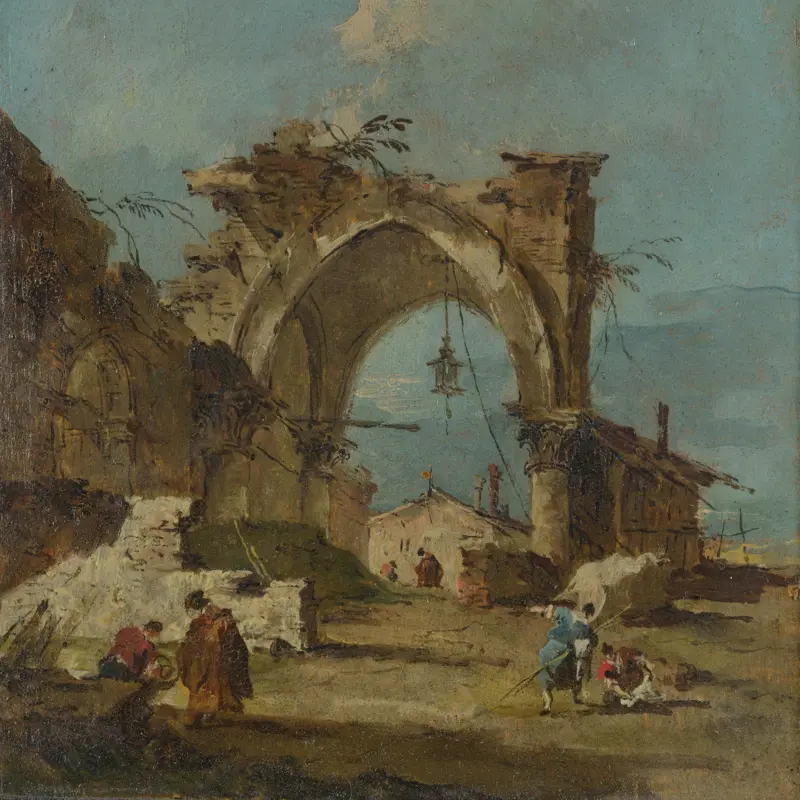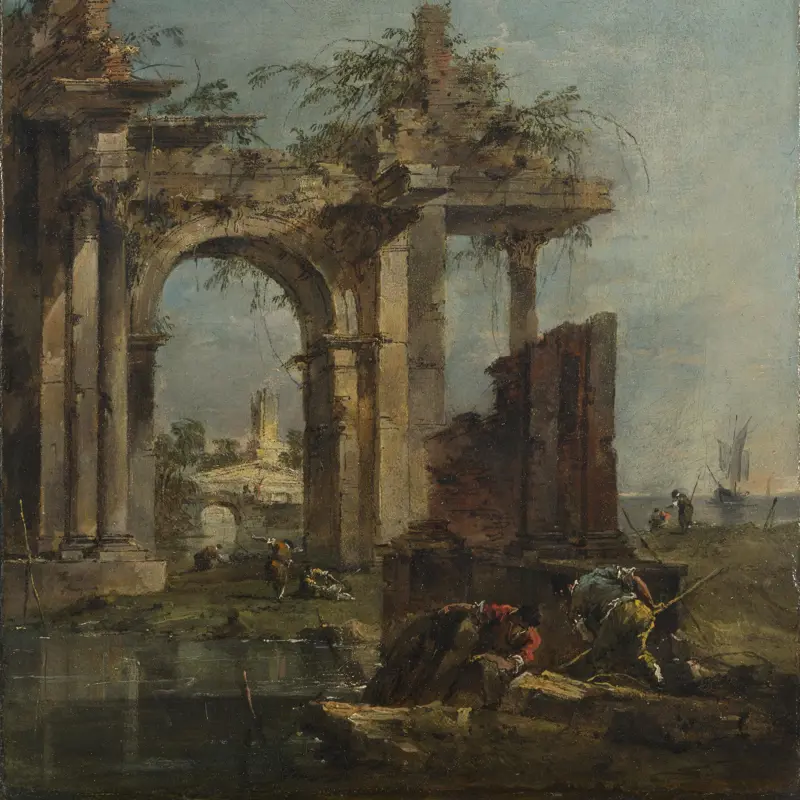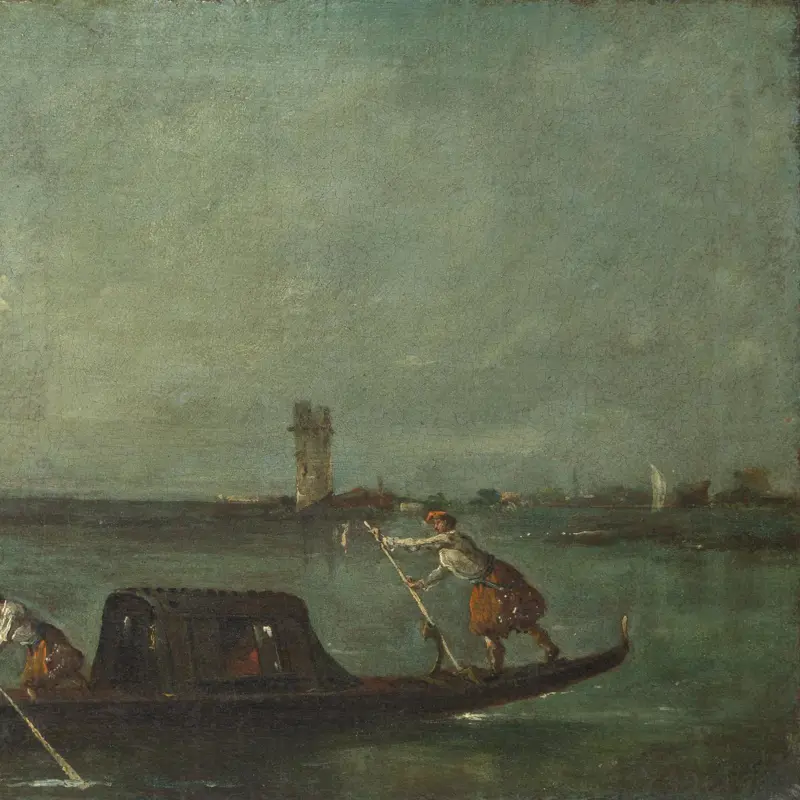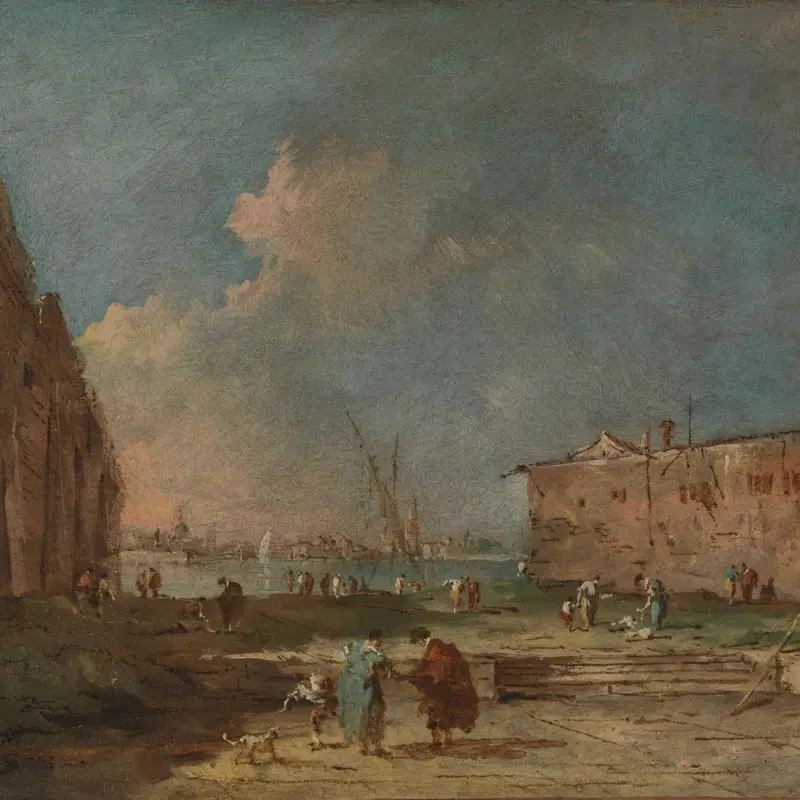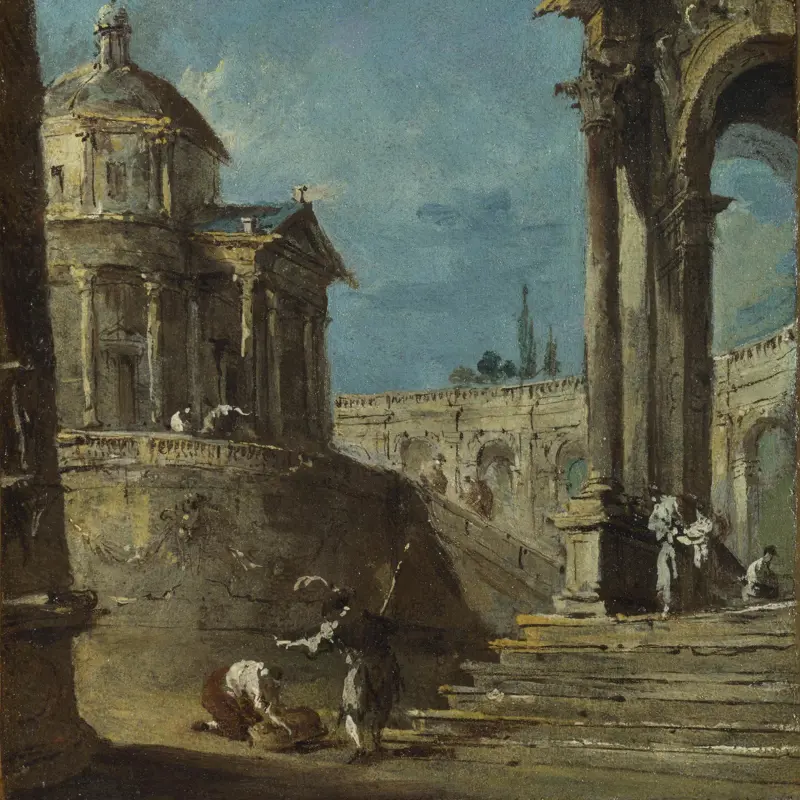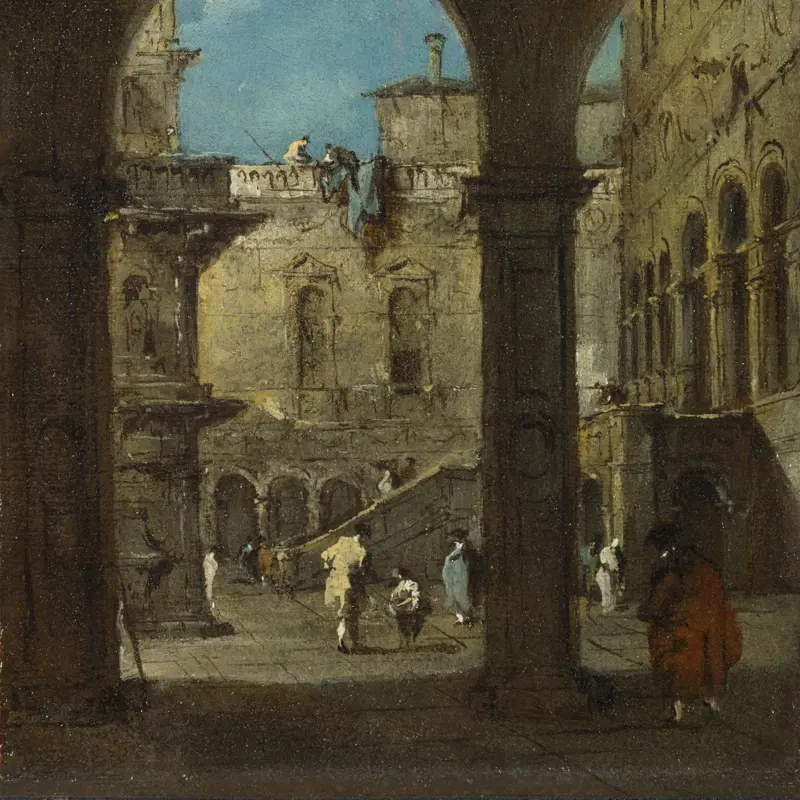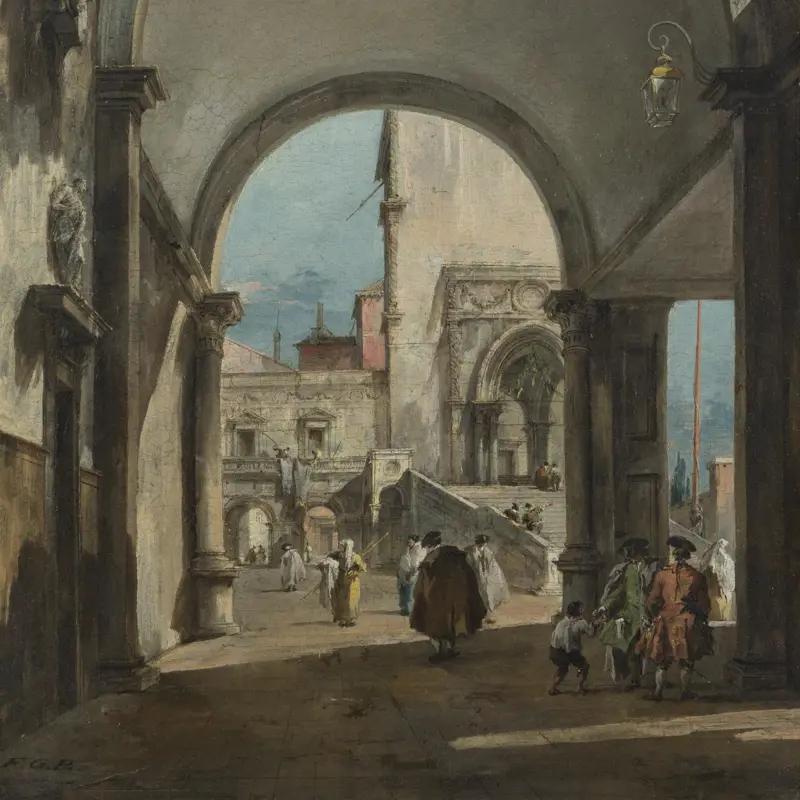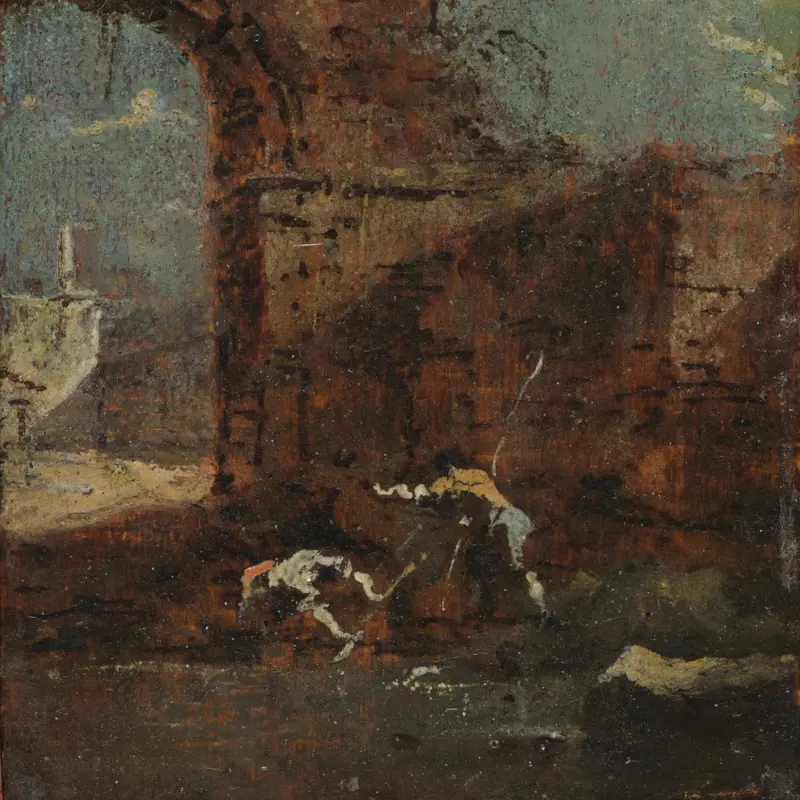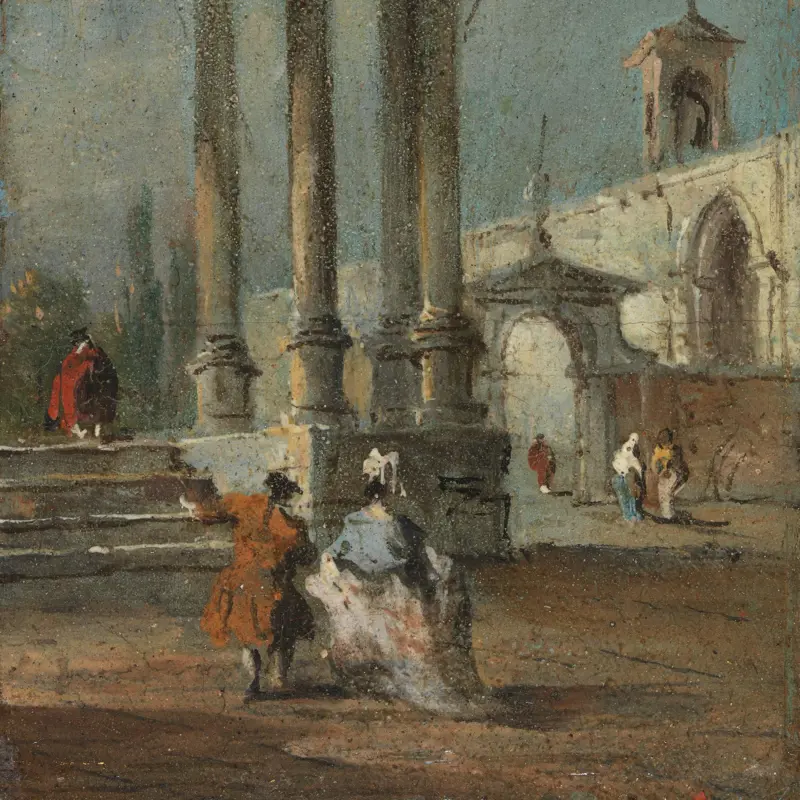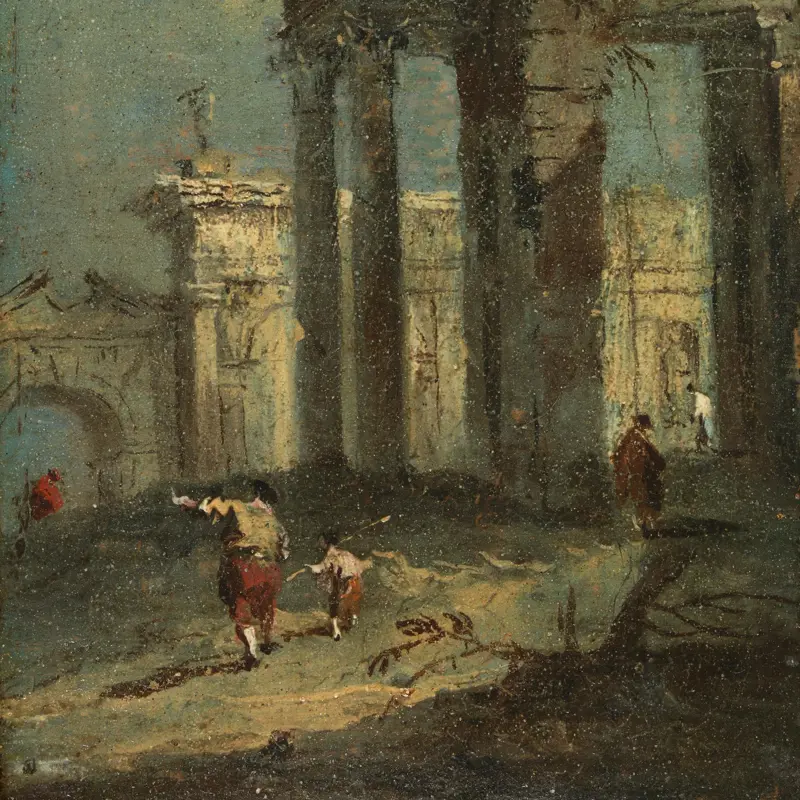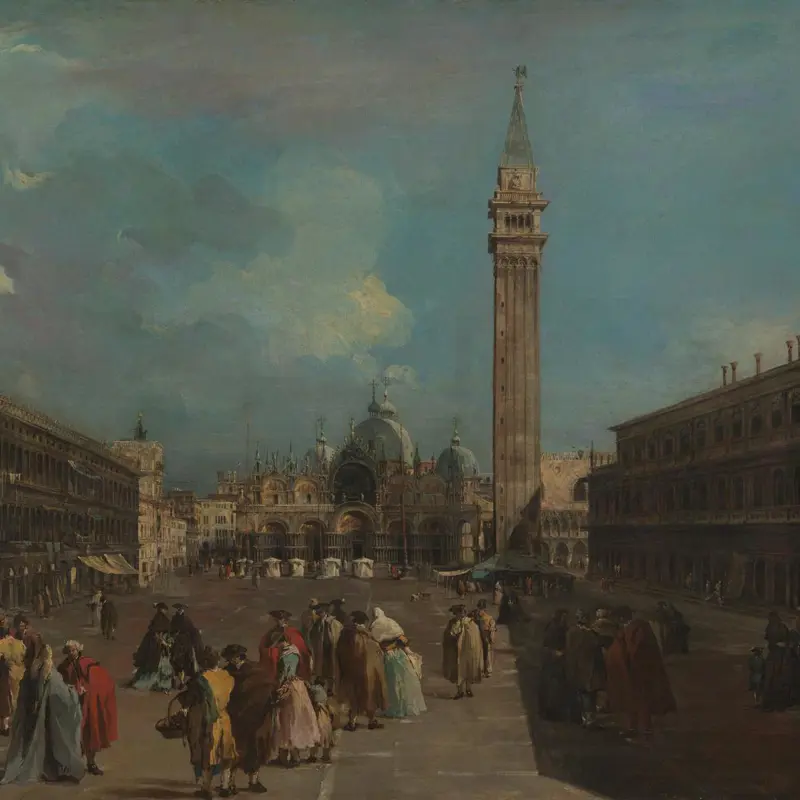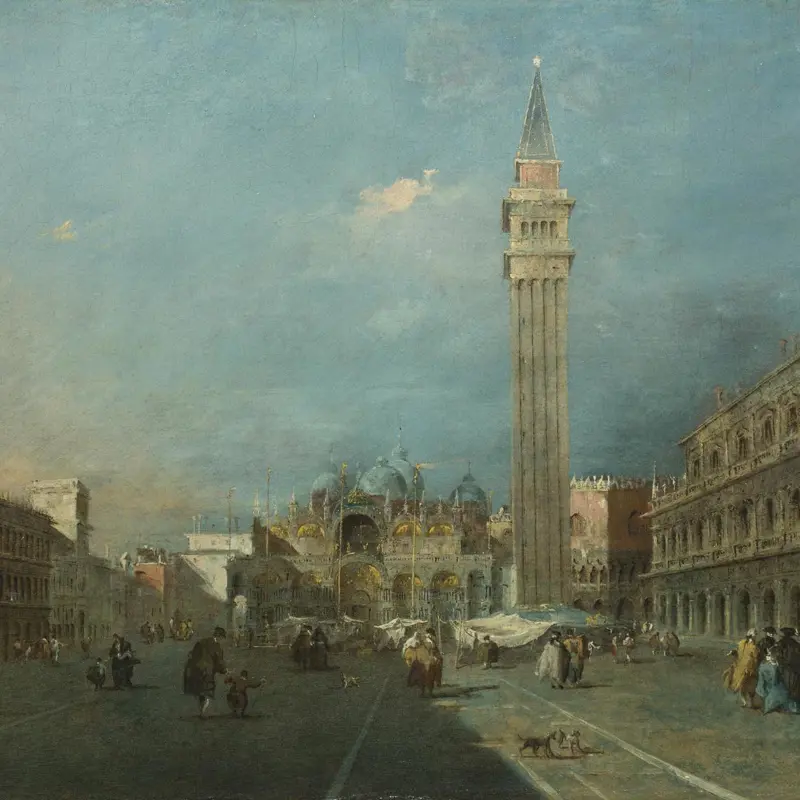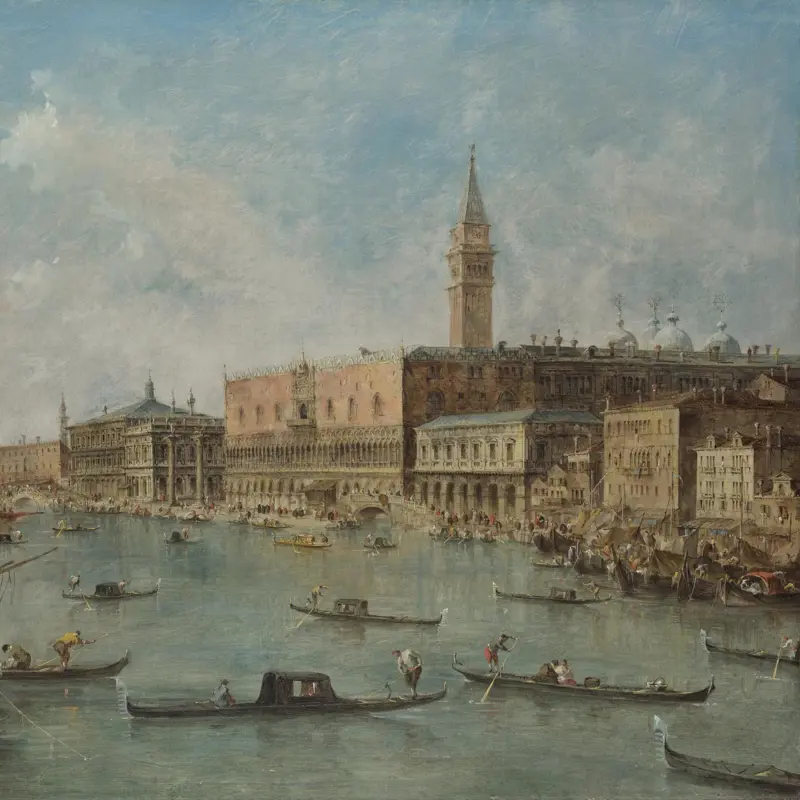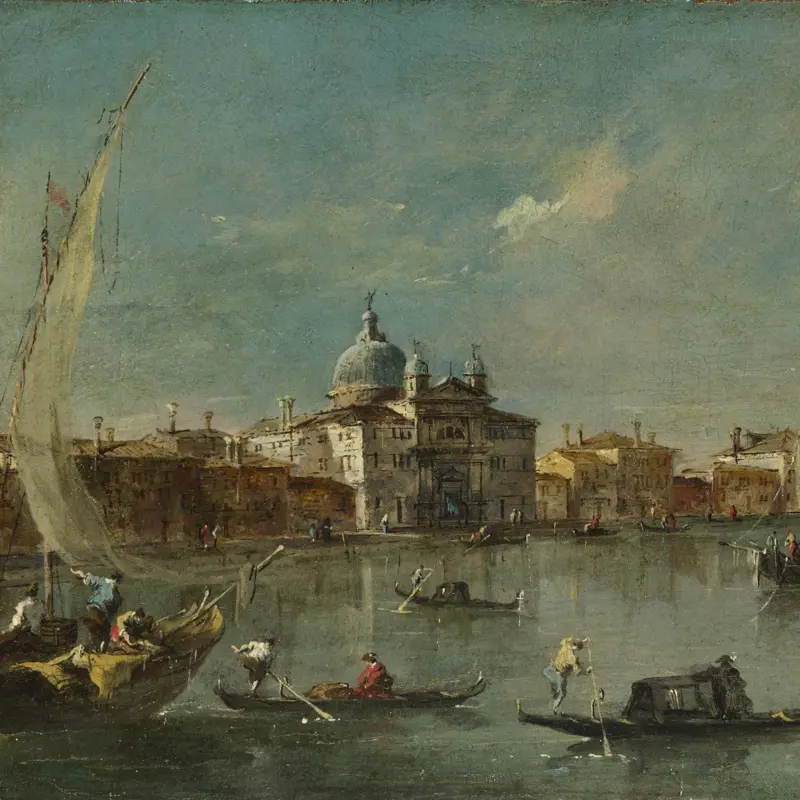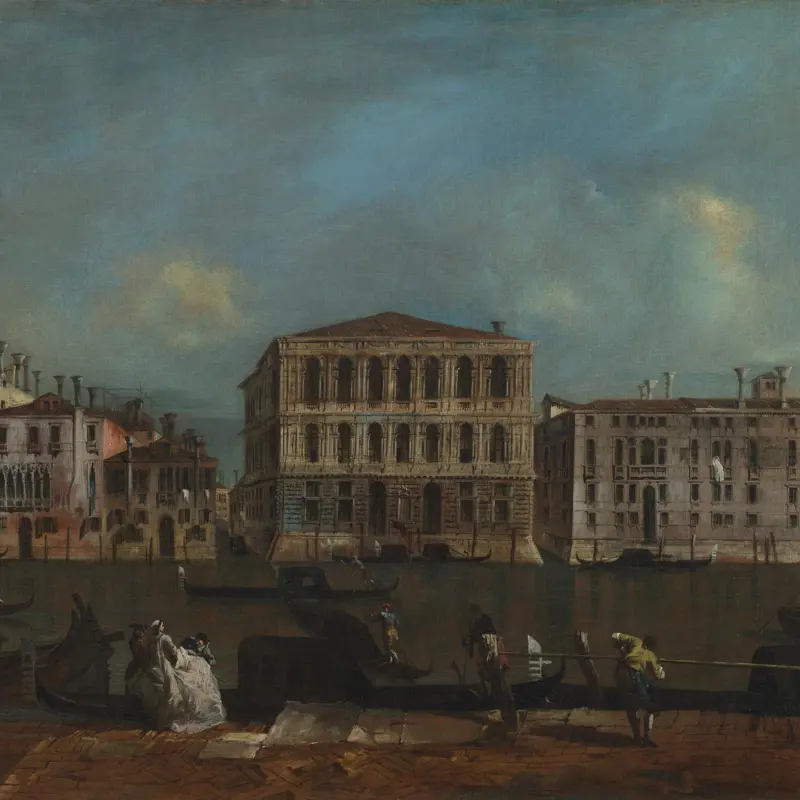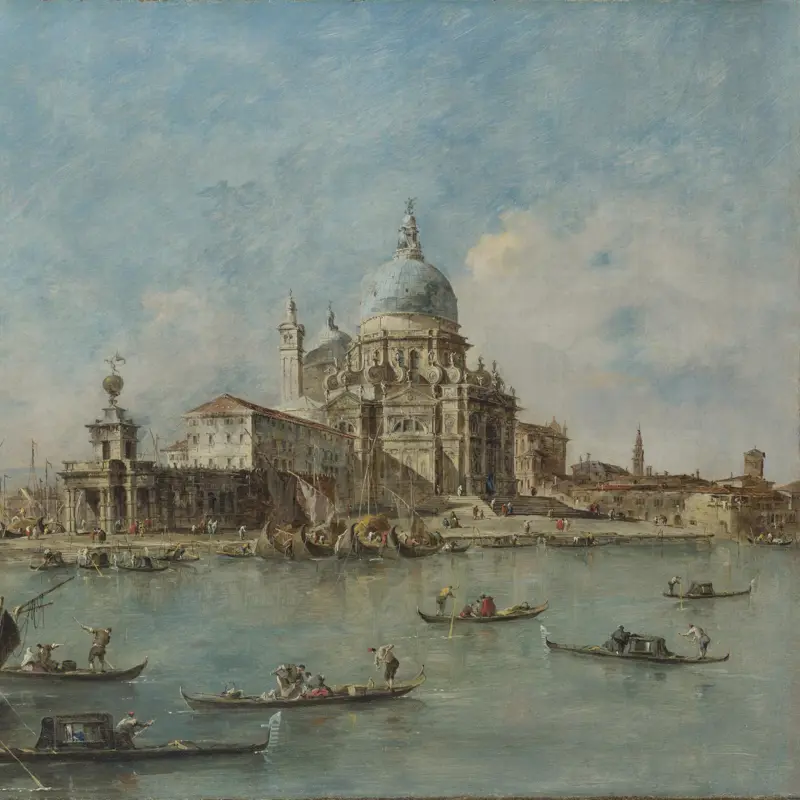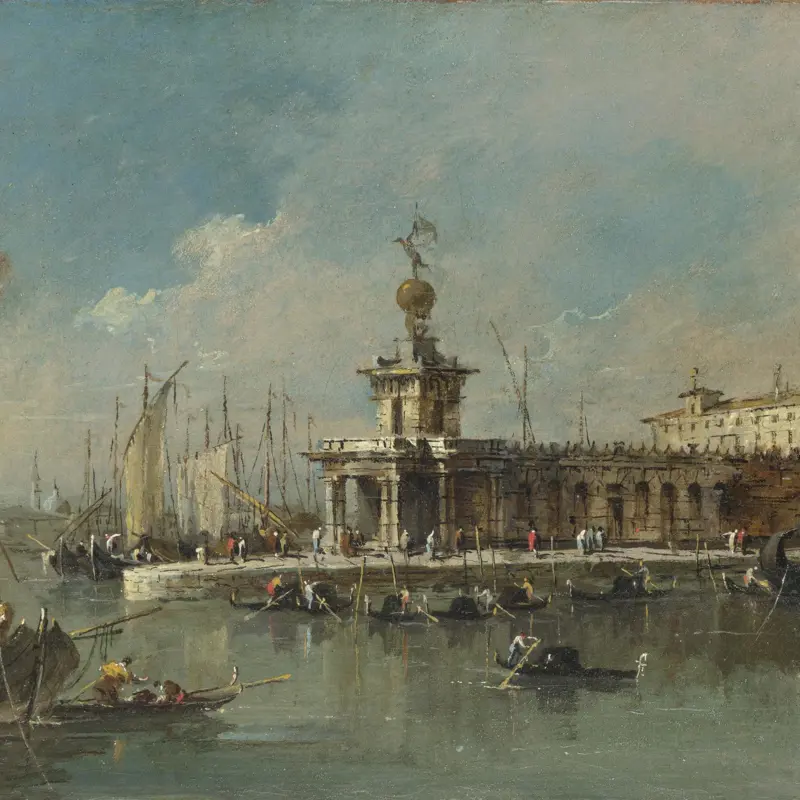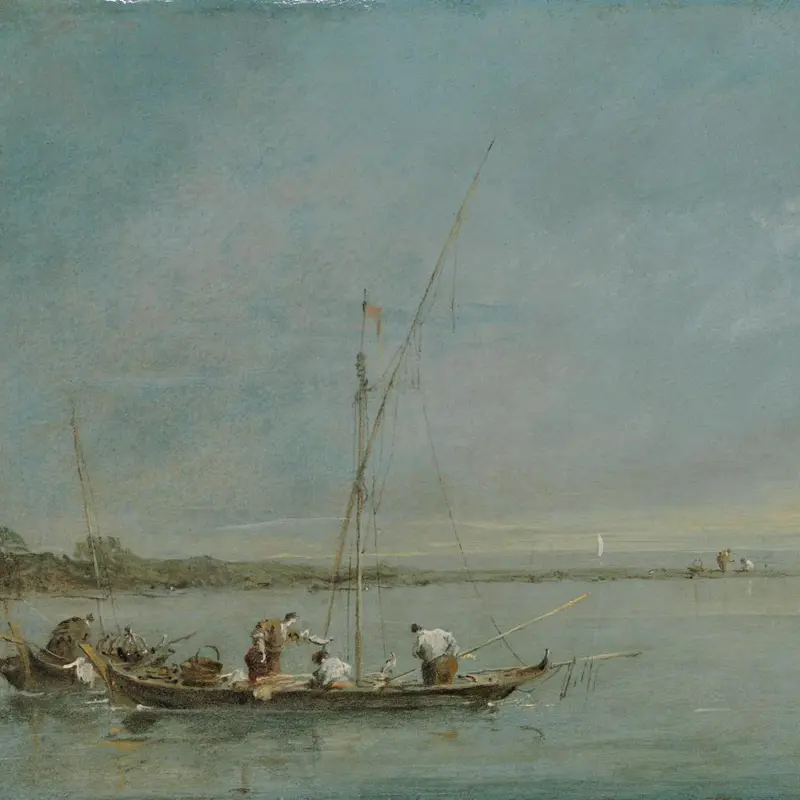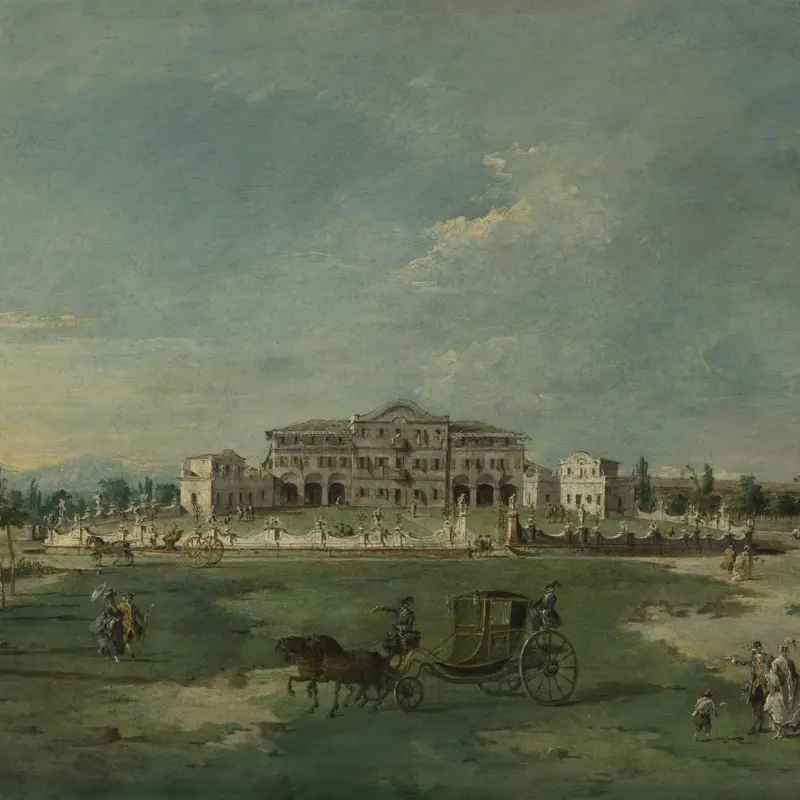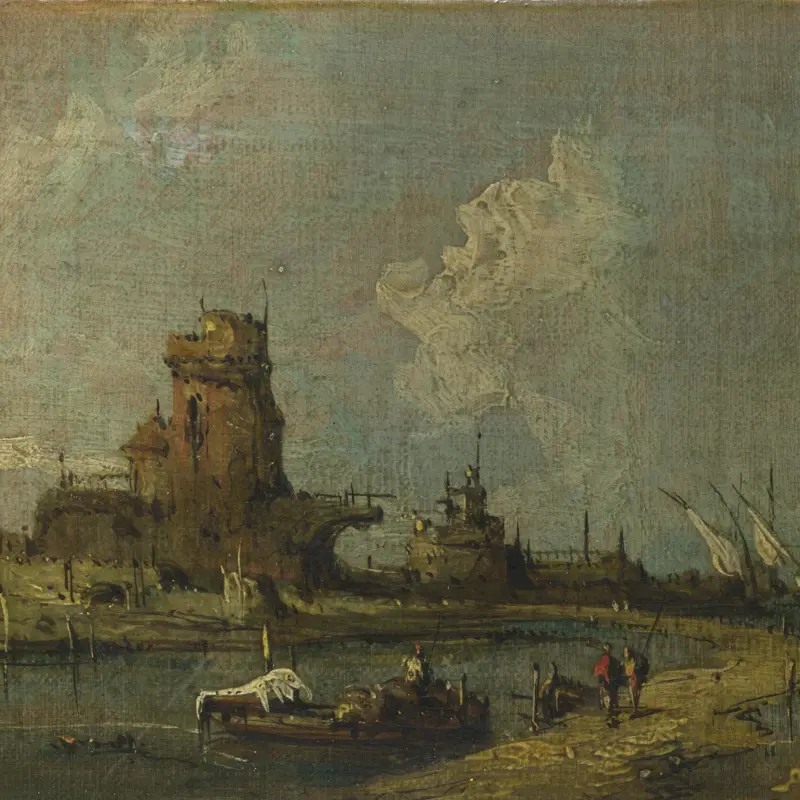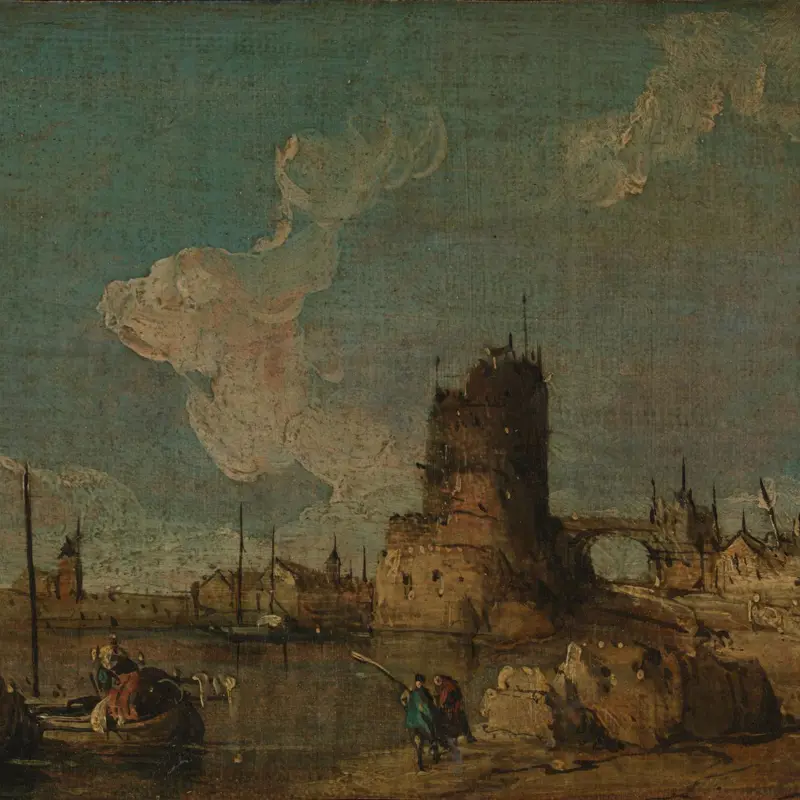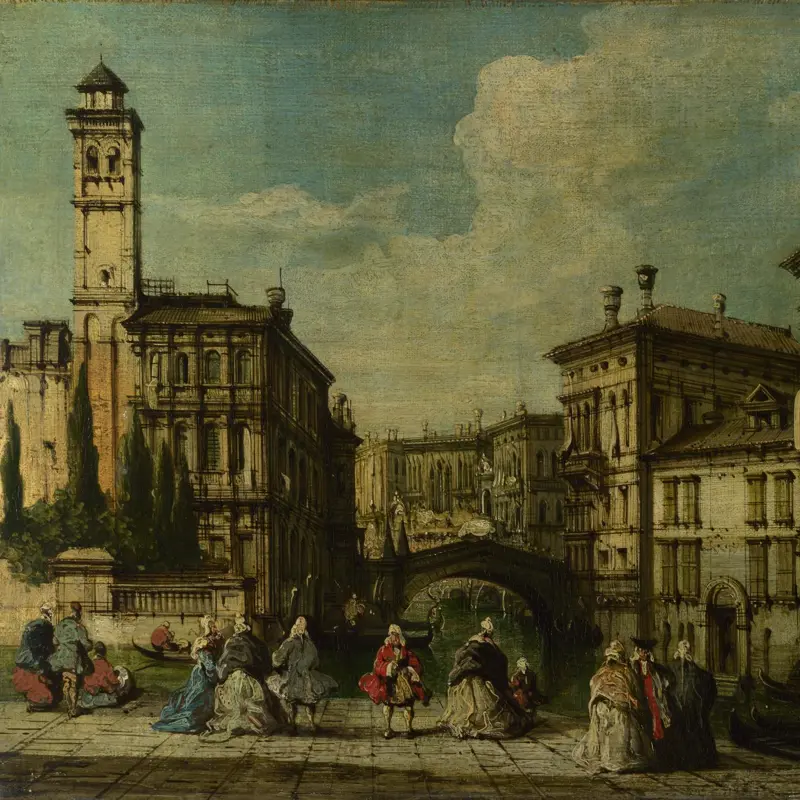Francesco Guardi, 'Venice: The Arsenal', 1755-60
About the work
Overview
The Venetian Arsenal, a fortified shipyard and armoury, had been celebrated as a symbol of the Venetian Republic’s domination of the Mediterranean sea trade since the twelfth century. Its ornate gateway is decorated with statues of Greek and Roman gods; standing guard is the lion, a symbol of the city. Other statues of lions crouch, seeming ready to pounce on intruders and saboteurs.
High walls once shielded the Arsenal from public view, but the open window and the people coming out of the gate suggest that the once formidable security has been relaxed. By the mid-eighteenth century, Venice was no longer such a great sea power, though during Guardi’s lifetime the city’s ports and harbours remained lively trading hubs. Here, Venetians, tourists, seamen and traders gather in leisurely groups, but the hoisted bridge and large barge being pulled along the canal hint that everyday business continues.
Key facts
Details
- Full title
- Venice: The Arsenal
- Artist
- Francesco Guardi
- Artist dates
- 1712 - 1793
- Date made
- 1755-60
- Medium and support
- Oil on canvas
- Dimensions
- 62.3 × 96.9 cm
- Inscription summary
- Signed
- Acquisition credit
- Presented by Alfred A. de Pass, 1920
- Inventory number
- NG3538
- Location
- Room 33
- Collection
- Main Collection
- Frame
- 18th-century English Frame
Provenance
Additional information
Text extracted from the ‘Provenance’ section of the catalogue entry in Michael Levey, ‘National Gallery Catalogues: The Seventeenth and Eighteenth Century Italian Schools’, London 1986; for further information, see the full catalogue entry.
Exhibition history
-
2012Francesco Guardi (1712 - 1793)Museo Correr29 September 2012 - 17 February 2013
Bibliography
-
1956Levey, Michael, National Gallery Catalogues: The Eighteenth Century Italian Schools, London 1956
-
1986Levey, Michael, National Gallery Catalogues: The Seventeenth and Eighteenth Century Italian Schools, London 1986
-
2001
C. Baker and T. Henry, The National Gallery: Complete Illustrated Catalogue, London 2001
About this record
If you know more about this work or have spotted an error, please contact us. Please note that exhibition histories are listed from 2009 onwards. Bibliographies may not be complete; more comprehensive information is available in the National Gallery Library.

